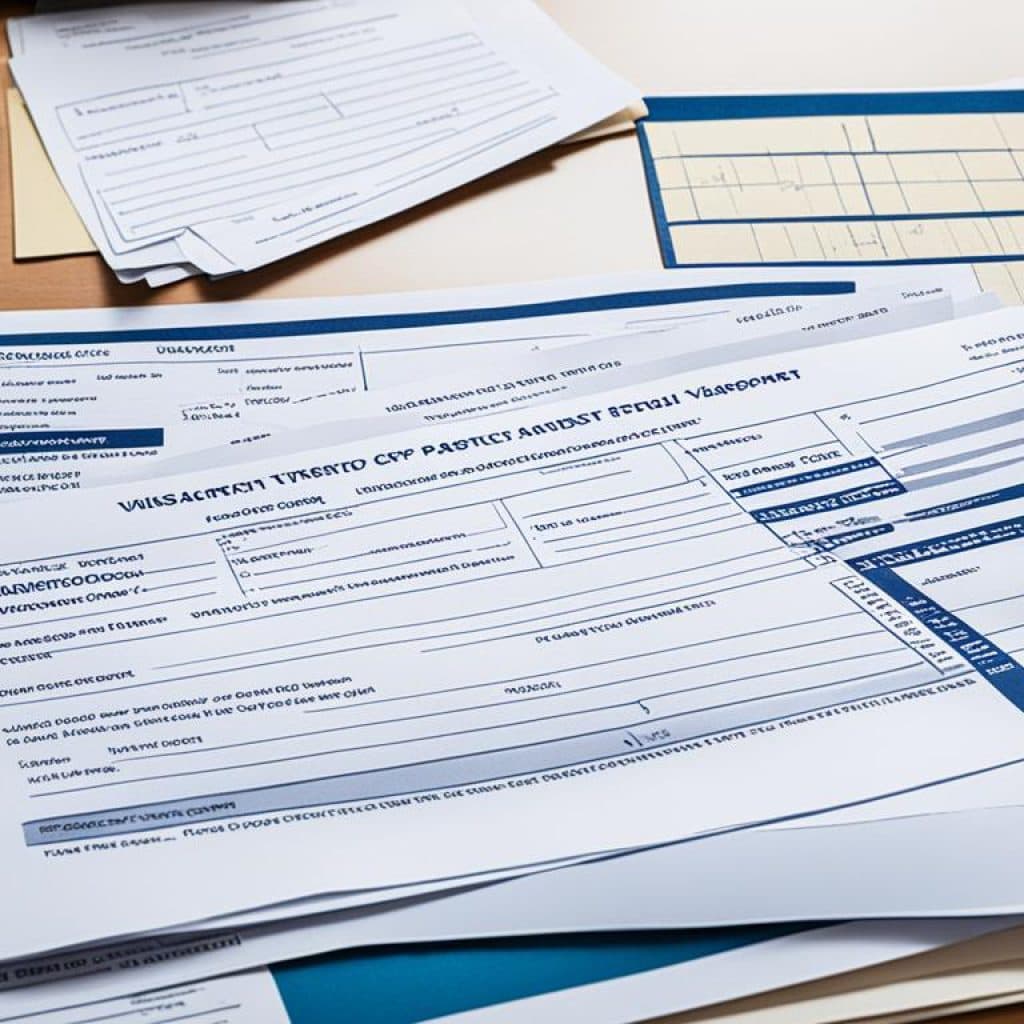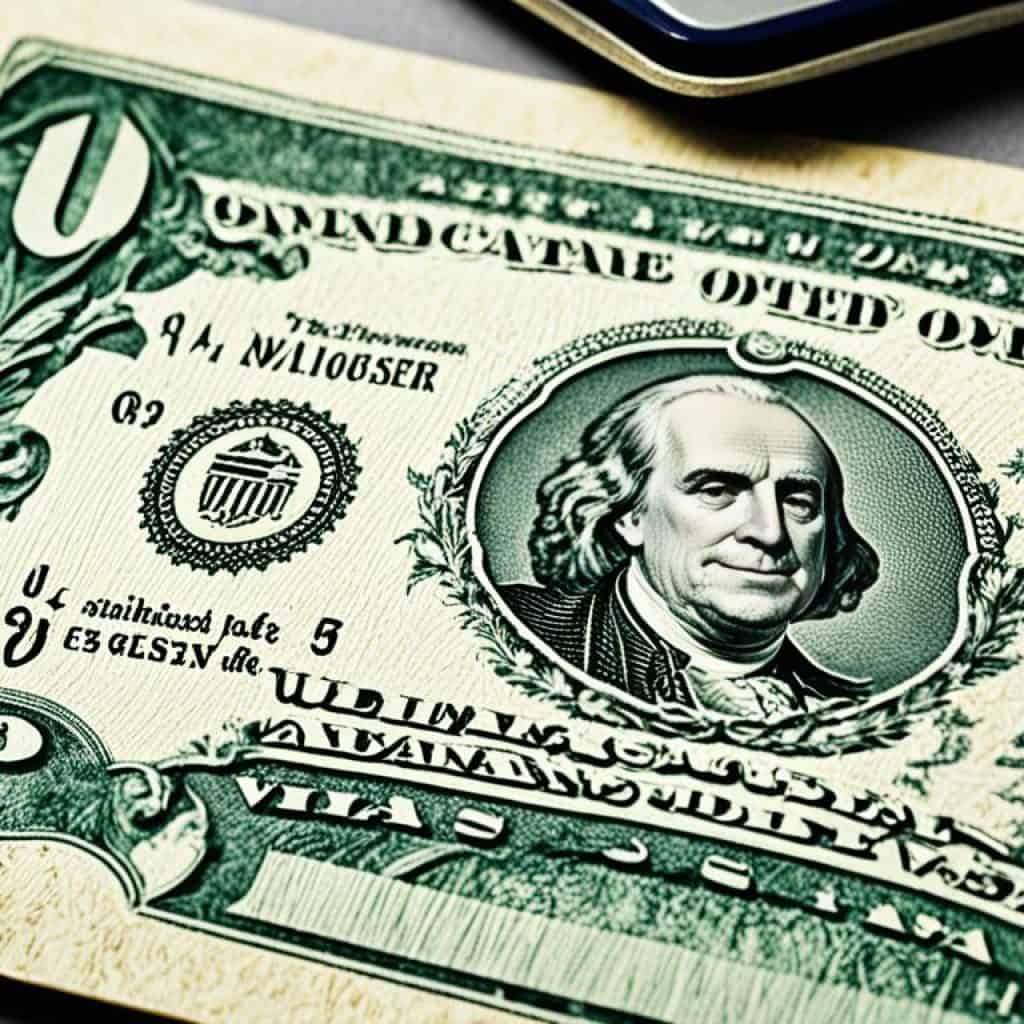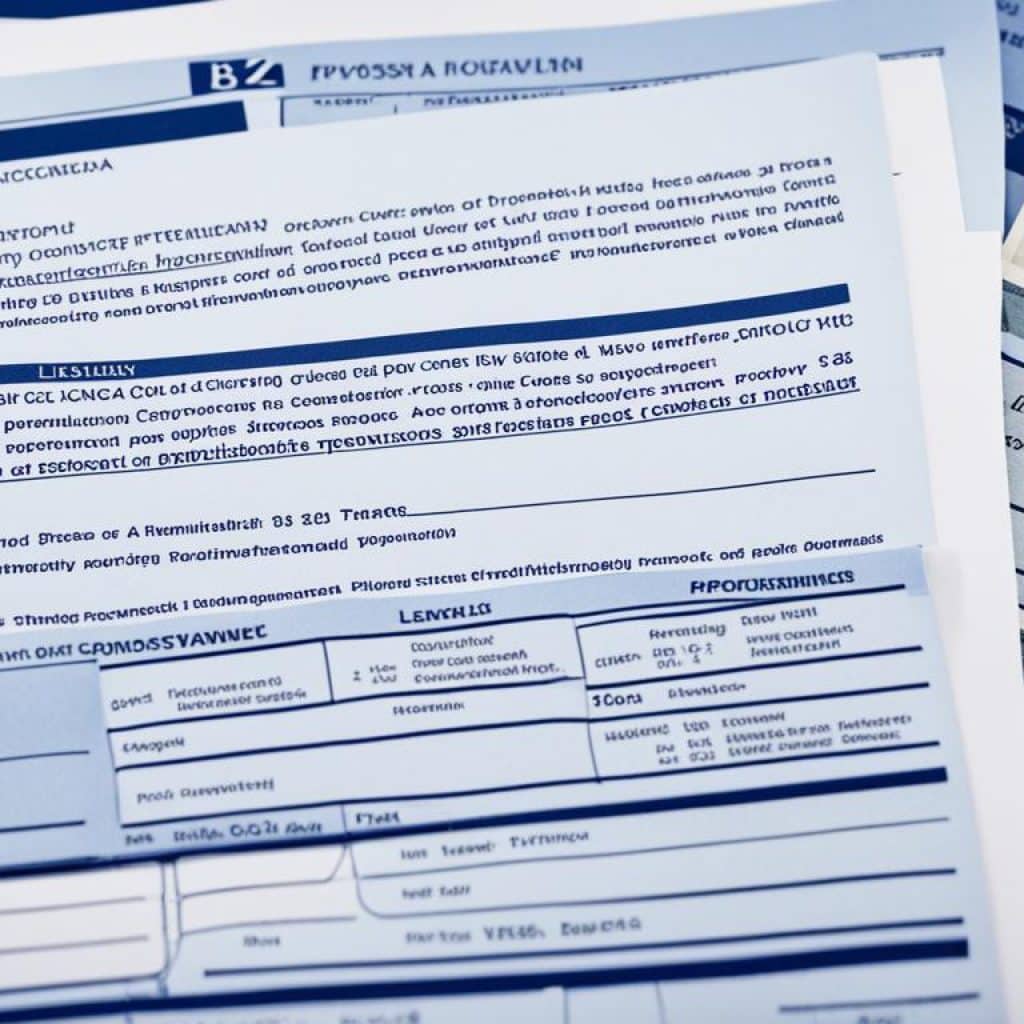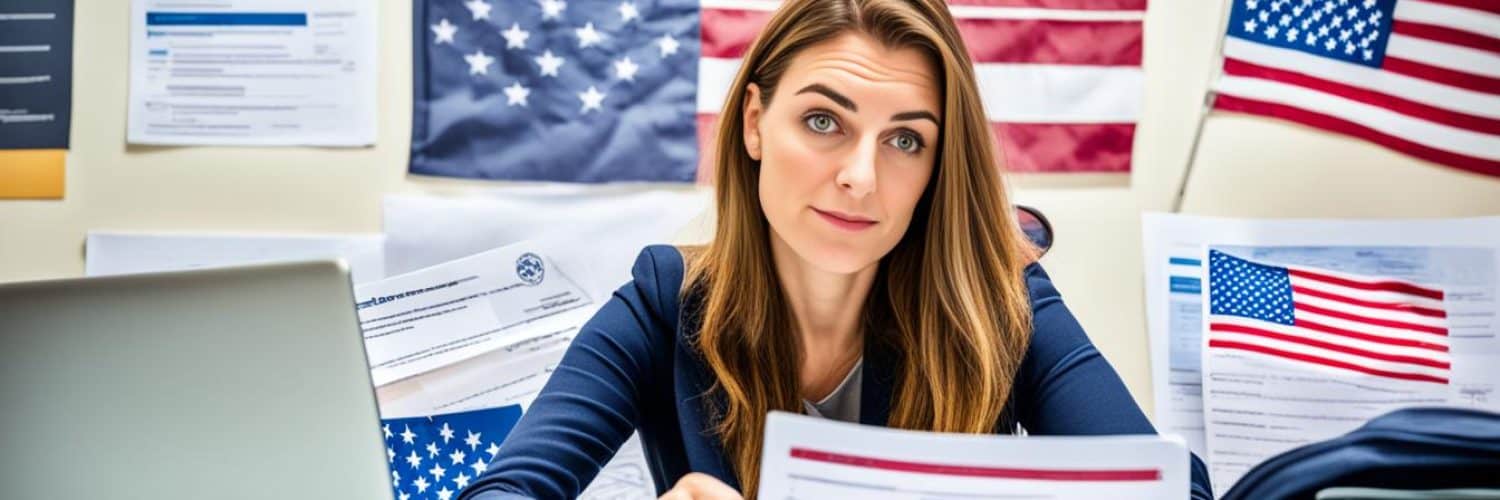Are you dreaming of visiting the United States for business or tourism? Discover the step-by-step process to apply for a U.S. visitor visa and unlock the door to unforgettable experiences in the land of opportunity. From completing the online application to preparing for the visa interview, we’ve got you covered. Find out everything you need to know about obtaining a U.S. visitor visa in 2023.
- Understanding the different categories and permitted activities of the U.S. visitor visa
- Navigating the U.S. visitor visa application process and scheduling an interview
- Gathering essential documents and meeting the requirements for a successful application
- Insight into the interview and approval process for the U.S. visitor visa
- Entering the United States with a U.S. visitor visa and understanding the restrictions
U.S. Visitor Visa Categories and Permitted Activities
The U.S. visitor visa offers two main categories: B-1 for business purposes and B-2 for tourism purposes. For individuals planning to engage in both business and tourism activities, the B-1/B-2 visa category allows for a combination of permitted activities. It’s important to understand the specific requirements and limitations of each category when planning your U.S. visit.
Here are some examples of permitted activities on a U.S. visitor visa:
- Consulting with business associates
- Attending conferences, conventions, or trade shows
- Settling an estate
- Negotiating contracts
- Vacationing or engaging in tourism activities
- Visiting friends or relatives
- Receiving medical treatment
- Participating in social events or contests
It’s important to note that certain activities such as study, employment, or permanent residency require different categories of visas.
Visa Category Comparison
| Visitor Visa Category | Permitted Activities |
|---|---|
| B-1 | Business-related activities such as consulting, negotiating contracts, or attending conferences |
| B-2 | Tourism-related activities such as vacationing, visiting friends or relatives, or receiving medical treatment |
| B-1/B-2 | Combination of business and tourism activities |
U.S. Visitor Visa Application Process
The U.S. visitor visa application process is a multi-step procedure that ensures a smooth transition for individuals seeking to visit the United States. By following these steps and preparing the necessary documentation, you can increase your chances of obtaining a visa.
Step 1: Complete the Online Nonimmigrant Visa Application Form
The first step in the U.S. visitor visa application process is to complete the Online Nonimmigrant Visa Application, Form DS-160. This form can be easily accessed and filled out online. Once you have completed the form, make sure to print the confirmation page. This page contains important information that will be needed for your visa interview.
Step 2: Schedule an Interview at a U.S. Embassy or Consulate
After completing the online application form, the next step is to schedule an interview at a U.S. Embassy or Consulate. The interview is typically required for applicants aged 14-79, although certain exceptions may apply. It is important to note that wait times for interview appointments can vary depending on the location, season, and visa category. To avoid any delays, it is advisable to schedule your interview as early as possible.
Step 3: Gather Required Documentation
As part of the application process, you will need to gather the necessary documentation to support your visa application. This includes a valid passport, the DS-160 confirmation page, proof of payment for the application fee, and a photograph that meets the required specifications. It is crucial to ensure that all documents are up to date and adhere to the specified guidelines.
Remember, the U.S. visitor visa application process requires careful attention to detail and thorough preparation. By completing the online visa application form, scheduling an interview, and gathering the required documentation, you are taking important steps towards your U.S. visitor visa.
U.S. Visitor Visa Documentation Requirements
To successfully apply for a U.S. visitor visa, you will need to provide specific documentation. The essential documents include:
- A valid passport that remains valid for at least six months beyond your intended stay in the U.S.
- The DS-160 confirmation page, which is the online nonimmigrant visa application form. Make sure to complete this form accurately and save the confirmation page for your records.
- The payment receipt for the visa application fee. Ensure that you have paid the required fee and keep the receipt as proof.
- A photograph that meets the visa requirements, such as the correct size, format, and background color. Following the guidelines for the photograph is crucial to avoid any delays or issues with your application.
In addition to these essential documents, you may be asked to submit additional documentation to support your visa application. These documents are used to establish the purpose of your trip, demonstrate your intention to return to your home country after the visit, and provide evidence of your financial ability to cover the trip expenses. Examples of additional documents that may be required include:
- A medical diagnosis or letter from a U.S. medical facility if you are traveling for medical treatment.
- Proof of employment, such as a letter from your employer, to show that you have ties to your home country and a reason to return.
- Proof of family ties, such as marriage or birth certificates, to demonstrate your connections and responsibilities in your home country.
- Evidence of financial ability to cover the expenses of your trip, such as bank statements or sponsorship letters.
It is essential to gather all the required documentation and submit it accurately to increase your chances of a successful visa application. Failing to provide the necessary documentation may result in delays or the denial of your visa application.

| Document | Purpose |
|---|---|
| Valid Passport | To prove identity and ensure travel validity |
| DS-160 Confirmation Page | Verification of completed visa application |
| Payment Receipt | Proof of visa application fee payment |
| Photograph | Visual identification for the visa application |
| Additional Supporting Documents | To establish the purpose of the trip, intent to return, and financial ability to cover expenses |
U.S. Visitor Visa Interview and Approval Process
The U.S. visitor visa interview is a crucial step in the application process. It is conducted by a consular officer who assesses the applicant’s eligibility for the visa. During the interview, the officer verifies whether the applicant meets all the requirements under U.S. law to receive the visa.
If deemed necessary, ink-free, digital fingerprint scans may be collected during the interview as part of the application process. These scans help in accurately identifying the applicant and ensuring the integrity of the visa application.
After the interview, the consular officer may determine that additional administrative processing is required for the application. If this is the case, the applicant will be notified accordingly. It’s important to note that administrative processing may take some time, and the applicant should remain patient and cooperative throughout the process.
If the visa application is approved, the applicant may be required to pay a visa issuance fee, if applicable. It is essential to follow the instructions provided by the consular officer regarding the fee payment. Additionally, the applicant should make arrangements for the return of their passport and the issued visa.
Tips for a Successful Visa Interview
- Be well-prepared and have all the necessary documents organized and readily accessible during the interview.
- Answer all questions honestly and clearly. It’s important to provide accurate information to the consular officer.
- Be confident and maintain a positive attitude throughout the interview.
- Bring supporting documents that establish the purpose of your visit, your ties to your home country, and your ability to cover the trip expenses.
Remember, the visa interview is an opportunity to demonstrate your eligibility for a U.S. visitor visa. By preparing thoroughly and showcasing your genuine intentions, you can increase your chances of a successful outcome.
| Step | Action |
|---|---|
| 1 | Submit a complete visa application form (DS-160). |
| 2 | Schedule a visa interview appointment at a U.S. Embassy or Consulate. |
| 3 | Prepare all the required documents for the interview. |
| 4 | Attend the visa interview and provide all necessary information. |
| 5 | Pay the visa issuance fee, if applicable. |
| 6 | Follow the instructions given by the consular officer regarding the return of your passport and visa. |
Entering the United States with a U.S. Visitor Visa
A U.S. visitor visa allows foreign citizens to travel to a U.S. port-of-entry, such as an airport, and request permission to enter the country. However, it’s important to note that a visa does not guarantee entry into the United States. The Department of Homeland Security has the authority to permit or deny admission to the country. If entry is granted, the Customs and Border Protection official will provide an admission stamp or a Form I-94, which serves as an arrival/departure record.
- Pro Tip: Prepare for your port-of-entry interview by having all necessary documents readily accessible, such as your passport, visa, and supporting documents.
It’s also important to be aware of any restrictions on bringing food, agricultural products, or other restricted/prohibited goods into the country. Customs and Border Protection officers will thoroughly inspect your belongings to ensure compliance with import regulations.
| U.S. Visitor Visa Entry Information | |
|---|---|
| Visa Issuance Fee: | $160 |
| Duration of Stay: | Typically up to 6 months per visit |
| Multiple Entries: | Generally permitted |
| Requirements: | Valid passport, visa, supporting documents |
| Restrictions: | Prohibited items, agricultural products, food |
“I believe that travel brings people closer together, fosters understanding, and enriches our lives. With a U.S. visitor visa in hand, you have the opportunity to explore the diverse landscapes, vibrant cities, and unique culture that the United States has to offer. Remember to respect the customs and regulations of the country, and make the most of your journey!”
Extending Your Stay in the United States
If you wish to extend your stay in the United States beyond the date indicated on your admission stamp or Form I-94, you have the option to request an extension through the U.S. Citizenship and Immigration Services (USCIS). It is essential to apply for an extension before your current status expires and ensure that you meet the eligibility requirements for extension. Failure to depart the United States on time can result in being out of status and may lead to future visa ineligibilities.
To begin the process of extending your stay, you can navigate to the USCIS website and select the “Extend Your Stay” option. This will provide you with the necessary instructions and forms to complete your application. It is crucial to submit your extension request in a timely manner to avoid any disruption in your legal status.
Eligibility for Extension
When applying for an extension of your U.S. visitor visa stay, you must meet certain eligibility requirements. These criteria typically include:
- Demonstrating that your visit to the United States is temporary and you have valid reasons to extend your stay.
- Providing evidence that you have the financial means to support yourself during the extended period.
- Showing that you have not violated the terms of your current visa status during your stay.
- Completing the necessary forms accurately and providing any supporting documentation as requested.
Meeting these requirements will increase your chances of obtaining an extension and allow you to continue your activities in the United States while remaining in compliance with immigration laws.
Note: It is important to consult with an immigration attorney or legal expert to ensure you understand the specific eligibility criteria and requirements for extending your stay.
Important Considerations
When applying for an extension, keep the following points in mind:
You should not finalize any travel plans or purchase tickets until your extension is approved. It is advisable to wait until you have received official notification from USCIS to avoid any potential issues.
If your current U.S. visa is in an expired passport, you can still use it along with a valid passport for travel and admission to the United States. Ensure you have both passports with you when traveling.
| Pros | Cons |
|---|---|
| Allows you to prolong your stay in the United States for legitimate reasons | Requires careful preparation and meeting specific eligibility criteria |
| Enables you to continue participating in activities, such as attending conferences or visiting family | Does not guarantee approval, and your extension request can be denied |
| Provides peace of mind by remaining in compliance with U.S. immigration laws | Dependent on the discretion of USCIS and subject to processing times |
Note: The table above presents a summary of the pros and cons associated with extending your stay in the United States; however, individual circumstances may vary.
Extending your stay in the United States can offer further opportunities for exploration, engagement, and personal growth. By following the necessary procedures and meeting the eligibility requirements, you can make the most of your time in the country while adhering to immigration regulations.
Changing Your Status in the United States
If your plans change while you are in the United States, such as getting married to a U.S. citizen or receiving an offer of employment, you have the option to change your nonimmigrant status. This process, known as “Change of Status,” allows you to transition to another nonimmigrant visa category that aligns with your new circumstances. Whether you are interested in pursuing higher education with a student visa (F-1) or seeking work opportunities with a work visa (H-1B), changing your status can provide you with the necessary legal authorization.
Note: It’s important to file the change of status application before your current status expires and to meet the specific requirements for the desired visa category. Failure to do so can result in being out of status and future visa ineligibilities.
Steps for Changing Your Status
- Research the Visa Category: Familiarize yourself with the requirements and restrictions of the visa category you wish to transition into. Each visa category has its own eligibility criteria and documentation requirements.
- Prepare Supporting Documents: Gather all the necessary documentation to support your change of status application. This may include proof of marriage, employment offer letters, acceptance letters from educational institutions, and financial documentation.
- Complete the Application: Fill out the appropriate application form for the visa category you are changing to. Make sure to provide accurate and detailed information to avoid delays or complications.
- Pay the Required Fees: Submit the necessary fees along with your application. The fee amounts may vary depending on the visa category you are transitioning to.
- Submit the Application: Send your completed application, supporting documents, and fee payment to the United States Citizenship and Immigration Services (USCIS) according to their instructions. Keep copies of all documents for your records.
- Wait for a Decision: USCIS will review your application and make a decision on whether to approve or deny your request for a change of status. The processing time varies, so it’s important to check the USCIS website for updates.
- Receive Approval Notice: If your change of status application is approved, you will receive an official approval notice from USCIS. This notice confirms your new nonimmigrant status and its effective dates.
Changing your status in the United States opens up new opportunities and allows you to pursue different paths according to your evolving circumstances. It’s crucial to follow the proper procedures, meet the requirements, and submit a strong application in order to obtain the desired visa category.
| Benefits of Changing Your Status | Considerations |
|---|---|
|
|
“Changing your status in the United States allows you to adapt to new opportunities and pursue your ambitions within the boundaries of the law. Whether you have found love, a job, or educational prospects, it’s essential to navigate the change of status process meticulously to ensure a smooth transition.”
Additional Information for U.S. Visitor Visa Applicants
Applicants for a U.S. visitor visa should be aware of some additional information. It is important to note that a visitor visa does not permit employment or work in the United States. The purpose of this visa is for temporary stays, such as tourism or business visits.
When applying for a U.S. visitor visa, it is advisable not to make final travel plans or purchase tickets until the visa is obtained. This is because the approval of the visa is not guaranteed, and it’s best to have the visa in hand before making any commitments.
In some cases, a valid U.S. visa may be in an expired passport. In such situations, the visa can still be used along with a new valid passport for travel and admission to the United States. This allows for seamless travel without the need to transfer the visa to the new passport.
For individuals seeking medical treatment in the United States, it is important to note that additional documents may be requested during the visa interview process. These documents are required to demonstrate the need for medical treatment and the individual’s ability to cover the related expenses.
Lastly, Canadian nationals have different entry requirements for visiting the United States. It is essential for Canadian travelers to review the specific regulations and documentation requirements based on the purpose of their travel.
To summarize, knowing the additional information about U.S. visitor visas, understanding the limitations on employment, being cautious with travel plans, having a valid U.S. visa in an expired passport, preparing the necessary documents for medical treatment, and being aware of the specific requirements for Canadian travelers can help streamline the visa application process and ensure a smooth travel experience.
Visitor Visa Additional Information
| Information | Description |
|---|---|
| Employment | A visitor visa does not permit employment or work in the United States. |
| Travel Plans | Avoid making final travel plans or purchasing tickets until the visa is obtained. |
| Expired Visa | If a valid U.S. visa is in an expired passport, it can still be used along with a new valid passport for travel and admission to the United States. |
| Medical Treatment | Additional documents may be requested during the visa interview to demonstrate the need for medical treatment and the ability to cover related expenses. |
| Canadian Travelers | Canadian nationals have different entry requirements and should review the specific regulations based on their travel purposes. |
U.S. Visitor Visa Fees and Processing Times
Applying for a U.S. visitor visa involves certain fees to cover the processing of your application. The application fee for a visitor visa is $185, which is payable online during the application process. This fee applies to both B-1 and B-2 visa categories, whether you are traveling for business or tourism purposes. It’s important to note that this fee is non-refundable, even if your visa application is denied for any reason. In addition to the application fee, there may be additional costs associated with gathering the necessary documentation and acquiring passport photos.
The processing time for a U.S. visitor visa can vary depending on various factors, including the location of the U.S. Embassy or Consulate where you submit your application. Wait times can range from a few months to over two years, depending on the workload of the specific embassy or consulate and your nationality. It’s advisable to check the estimated wait times for a nonimmigrant visa interview appointment on the U.S. Embassy or Consulate website before applying. Planning ahead and applying early can help to minimize delays and ensure a smoother application process.
| Processing Times | Estimated Wait |
|---|---|
| Embassy or Consulate Location 1 | 3-6 months |
| Embassy or Consulate Location 2 | 6-12 months |
| Embassy or Consulate Location 3 | 12-24 months |
| Embassy or Consulate Location 4 | 24+ months |
Please note that these estimated wait times are subject to change and that processing times can vary. It’s always a good idea to check the most up-to-date information on the embassy or consulate website or consult with a qualified immigration attorney for the most accurate and current processing times.

By understanding the U.S. visitor visa fees and processing times, you can better plan your application and travel arrangements. Remember to prepare your documents and schedule your interview accordingly, giving yourself ample time to complete the application process. Additionally, staying informed about the specific wait times at your chosen embassy or consulate will help you manage your expectations and avoid unnecessary delays. Applying early and following the required procedures will increase your chances of a successful visa application and allow you to embark on your journey to the United States with confidence.
B-1/B-2 Visa Overview
The B-1/B-2 visa is a non-immigrant visa category that allows foreign nationals to travel to the United States temporarily for business (B-1) or tourism (B-2) purposes. The B-1 visa is designed for short business trips, such as attending meetings or negotiations, while the B-2 visa is specifically for tourism, vacation, or visiting friends and family. This versatile visa category also offers the option of a combination visa (B-1/B-2), granting individuals the ability to engage in both business and tourism activities with ease.
The B-1/B-2 visa is typically valid for up to 10 years, providing multiple opportunities to visit the United States. Each visit can last for a maximum period of 180 days, allowing individuals to explore the country, conduct business, and create lasting memories. Whether you’re looking to expand your business network or experience the rich culture and landscapes of the United States, the B-1/B-2 visa provides a flexible and convenient solution.
To better understand the specific requirements and application process for the B-1/B-2 visa, please refer to the following table:
| Requirement | B-1 Visa | B-2 Visa | B-1/B-2 Visa |
|---|---|---|---|
| Intended Purpose | Business activities | Tourism, vacation, visiting friends/family | Combination of business and tourism |
| Maximum Validity | Up to 10 years | Up to 10 years | Up to 10 years |
| Maximum Stay per Visit | 180 days | 180 days | 180 days |
With the B-1/B-2 visa, you can unlock countless opportunities in the United States, whether it’s exploring iconic landmarks, attending business conferences, or immersing yourself in the vibrant American culture. Start your journey today by applying for the B-1/B-2 visa and embark on an unforgettable experience.
B-1/B-2 Visa Processing Time and Multiple Entries
When applying for a B-1/B-2 visa, it’s important to consider the processing time and the number of entries allowed. The processing time for a B-1/B-2 visa can vary depending on the location and workload of the embassy or consulate. It can range from a few months to over two years. It’s advisable to apply well in advance of your intended travel dates to allow for any potential delays.
It’s worth noting that Canadian nationals usually do not need a visa for tourism purposes. However, if you plan to study, work, or move permanently to the U.S., you may require a B-1/B-2 visa.
One of the advantages of a B-1/B-2 visa is that it allows for multiple entries into the United States. This means there is no set limit on the number of visits you can make in a year. However, it’s important to remember that admission into the U.S. is at the discretion of the Customs and Border Protection officers. They will assess your circumstances each time you enter the country and determine the length of your stay.
Having a B-1/B-2 visa can offer flexibility for individuals who need to travel to the United States for various purposes throughout the year. Whether it’s for business meetings, family visits, or experiencing the wonders of American tourism, a B-1/B-2 visa allows you to make multiple visits without the need to reapply for a visa each time.
A B-1/B-2 visa can provide you with the opportunity to explore all that the United States has to offer, whether it be for business or pleasure. Just remember to plan ahead, be prepared with the necessary documentation, and ensure that your travel plans align with the permitted activities of the visa category.
B-1/B-2 Visa Cost and Required Documents
Applying for a B-1/B-2 visa involves certain costs and document requirements. Understanding the financial aspects and gathering the necessary paperwork are crucial steps to ensure a successful visa application process.
Visa Application Cost
The cost of a B-1/B-2 visa application includes an application fee of $185. This fee covers the processing of your visa application. Additionally, there may be additional expenses involved in gathering the required documentation and obtaining passport photos that meet the specifications.
Required Documents
In order to apply for a B-1/B-2 visa, you will need to provide several essential documents. These documents include:
- Valid Passport: You must have a passport that is valid for at least six months beyond your intended stay in the United States.
- DS-160 Confirmation Page: This is the confirmation page you receive after completing the Online Nonimmigrant Visa Application, Form DS-160.
- Payment Receipt: You need to provide proof of payment for the $185 application fee.
- Photograph: A photograph that meets the required specifications, such as size, background, and resolution, is also required.
In addition to these documents, you may be asked to provide additional documentation to establish the purpose of your trip, your intent to return to your home country, and your ability to cover the expenses of your trip. Examples of additional documents that may be requested include:
- Medical Diagnosis: If you are traveling for medical treatment, you may need to provide a medical diagnosis from a healthcare professional.
- Letters from U.S. Medical Facilities: If you have appointments or treatments scheduled in the United States, you may be asked to provide letters from the medical facilities confirming your appointments.
- Proof of Employment: Providing proof of employment can help demonstrate your ties to your home country and your intent to return after your visit.
- Evidence of Financial Ability: Showing that you have the financial means to cover your trip expenses, such as bank statements or proof of income, can also be required.
It’s important to carefully review the specific documentation requirements on the U.S. Embassy or Consulate website for your country to ensure you have all the necessary documents before submitting your application.

Conclusion
The U.S. visitor visa application process requires careful planning and preparation. By following the necessary steps, gathering the required documentation, and attending the visa interview, individuals can increase their chances of obtaining a U.S. visitor visa. It’s important to be aware of the permitted activities on the visitor visa and the limitations, as well as the options for extending stay or changing status while in the U.S. Understanding the fees and processing times associated with the visa application can also help in planning the timeline for travel. Overall, the U.S. visitor visa application process provides foreign citizens with the opportunity to explore the U.S. for tourism or business purposes.
FAQ
What is a U.S. visitor visa?
A U.S. visitor visa, also known as a nonimmigrant visa, is required for foreign citizens who wish to enter the United States temporarily for purposes such as business or tourism.
What are the categories of U.S. visitor visas?
The U.S. visitor visa is divided into two categories: B-1 for business purposes and B-2 for tourism purposes. These categories can also be combined as B-1/B-2, allowing for a combination of business and tourism activities.
What activities are permitted on a U.S. visitor visa?
Some permitted activities on a visitor visa include consulting with business associates, attending conventions, settling estates, negotiating contracts, vacationing, visiting friends or relatives, receiving medical treatment, and participating in social events or contests.
What is the U.S. visitor visa application process?
The U.S. visitor visa application process involves completing the Online Nonimmigrant Visa Application, scheduling an interview at a U.S. Embassy or Consulate, and gathering the necessary documentation.
What documents are required for a U.S. visitor visa application?
The required documents include a valid passport, DS-160 confirmation page, application fee payment receipt, and a photograph that meets the required specifications. Additional documents may be requested to establish the purpose of the trip, intent to depart the U.S., and ability to cover trip costs.
What happens during a U.S. visitor visa interview?
The U.S. visitor visa interview is conducted by a consular officer to determine the applicant’s eligibility for the visa. The officer assesses whether the applicant meets the requirements under U.S. law to receive the visa.
What happens after a U.S. visitor visa is approved?
If the visa is approved, the applicant may be required to pay a visa issuance fee, if applicable, and make arrangements for the return of the passport and visa.
What happens when entering the United States with a U.S. visitor visa?
A U.S. visitor visa allows foreign citizens to travel to a U.S. port-of-entry and request permission to enter the country. However, entry is not guaranteed, and the Department of Homeland Security has the authority to permit or deny admission to the country.
How can a U.S. visitor visa stay be extended?
Can the U.S. visitor visa status be changed while in the United States?
If plans change while in the United States, such as getting married to a U.S. citizen or receiving an offer of employment, it may be possible to request a change in nonimmigrant status through USCIS.
What additional information should U.S. visitor visa applicants be aware of?
U.S. visitor visa applicants should be aware that a visitor visa does not permit employment in the United States and that final travel plans should not be made until the visa is obtained.
What are the fees and processing times for a U.S. visitor visa?
The application fee for a U.S. visitor visa is $185. The processing time varies by location and can range from a few months to over two years.
What is a B-1/B-2 visa?
The B-1/B-2 visa is a nonimmigrant visa category that allows foreign nationals to travel to the United States temporarily for business (B-1) or tourism (B-2) purposes. It can also be issued as a combination visa (B-1/B-2) for both business and tourism activities.
How long is a B-1/B-2 visa valid?
A B-1/B-2 visa is typically valid for up to 10 years, with a maximum stay of 180 days per visit.
What is the processing time for a B-1/B-2 visa?
The processing time for a B-1/B-2 visa can vary, with wait times ranging from a few months to over two years, depending on the location and workload of the embassy or consulate.
What is the cost and required documents for a B-1/B-2 visa?
The cost of a B-1/B-2 visa includes the application fee of $185, along with any additional expenses for gathering documentation and acquiring passport photos. The required documents include a valid passport, DS-160 confirmation page, payment receipt, and a photograph that meets the specifications.








Add comment